CPR TRAINING – WHY YOU NEED TO LEARN IT: BASIC LIFE SUPPORT – THE LATEST GUIDELINES
Sudden Cardiac Death (SCD) and CPR – Some basic definitions
When the heart is unable to maintain the circulation of blood around the body due to a failure to function as a ‘pump’, a cardiac arrest occurs. The heart muscle cannot contract adequately and therefore the effective distribution of oxygen and glucose around the body is not possible. Sudden Cardiac Death (SCD) is the death of a patient usually within an hour from the onset of cardiac arrest and it is unfortunately a very common outcome. Cardiac arrest usually results from electrophysiologic complications such are rhythm disturbances. Ventricular tachycardia, ventricular fibrillation and asystole are common examples. Coronary Artery Disease and Myocardial Infarction are the most common causes of such rhythm anomalies and therefore SCD.
Cardiopulmonary Resuscitation (CPR) is a lifesaving technique with an aim to maintain blood circulation and oxygenation of the body and especially the brain. By mouth to mouth (or artificial) ventilation you fill the patient’s lungs with oxygenated air and then through the chest compressions you help distribute the oxygenated blood to his body. Basic CPR can be performed anywhere and anyone can easily learn how to do it. Pediatric CPR has some variations to Adult CPR and therefore I suggest further reading in case you want to learn more about Basic Life Support in children.
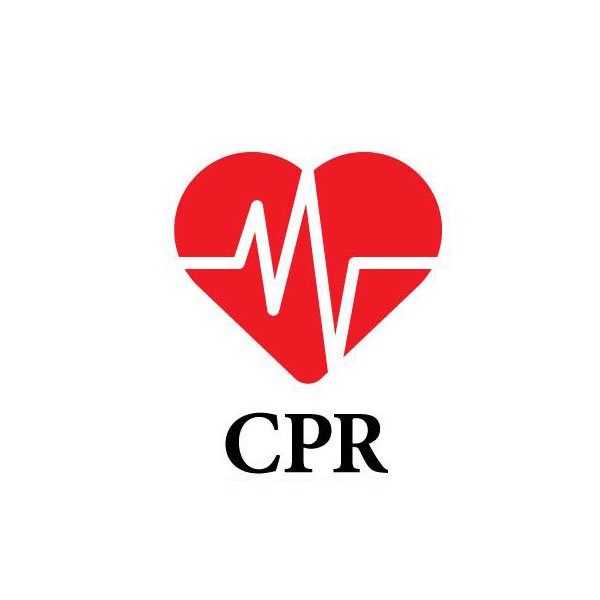
The statistics and why CPR is important
Approximately 400,000 people in the USA and 60.000 in the UK suffer Cardiac Arrest every year. Emergency services provide Advanced Life Support to about half of these patients. The main reason for this low number is that unfortunately, by the time the Ambulance Services arrive, the patient is already dead and beyond the point of resuscitation. Research states that the single most important factor for the prevention of death and serious neurologic complications after a cardiac arrest is to start CPR as soon as possible. In the vast majority of cases, bystanders or family members are not adequately trained to provide this. The availability of Automated External Defibrillators is also of high importance.
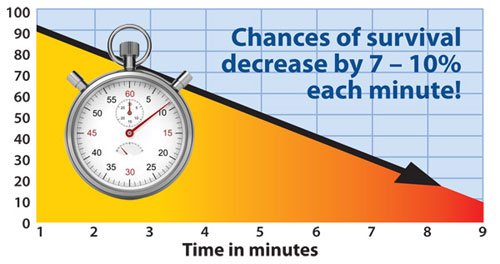
The Guidelines
Before we start, it is important to mention that an online article is in no way an adequate substitution for a First Aid course offered by a local professional in your area. If you really want to be able to help a family member or even a stranger who may suffer from cardiac arrest, invest some time into getting adequate training. First Aid course diplomas are quick to get and requested for many job applications. According to the UK Resuscitation council, there are four important steps which if followed correctly, will increase the survival chance of your patient.
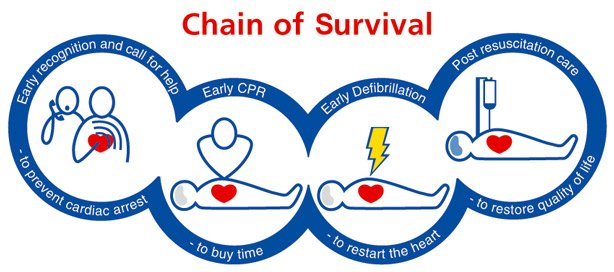
1. Early Recognition and Call for Help
Being able to recognise a cardiac arrest is the first step in providing CPR. Once you suspect this medical emergency you need to call for help. Shout for help so that bystanders will come to assist you and KNOW YOUR LOCAL EMERGENCY NUMBER (for example 112 is the European Emergency Number). If another person is present, ask them to make the emergency call while you continue to provide CPR for your patient. Remember, TIME IS LIFE. If you have to make the phone call yourself, begin by stating your Emergency, your location and your name. Briefly describe the situation to the dispatcher and inform them that you are about to perform CPR. Put the phone down (on loudspeaker if available) but do not hang up.
2. Begin CPR as soon as possible
3. Early Defibrillation
An AED (Automatic External Defibrillator) can save a patient’s life. Ask from a bystander to try and find one. They are commonly found in many public areas, shopping malls, banks, sports centres, public transport stations and restaurants. There are clear instructions on how to use them on the box of the AED. They are automatic, so they will guide you through what needs to be done.
4. Early Advanced Life Support and In-hopital care
Trained medical personnel will take over the resuscitation once they have arrived. Your early CPR will still be however the biggest contribution to saving the patient’s life and maintaining a good quality of life.
The basic life support algorithm
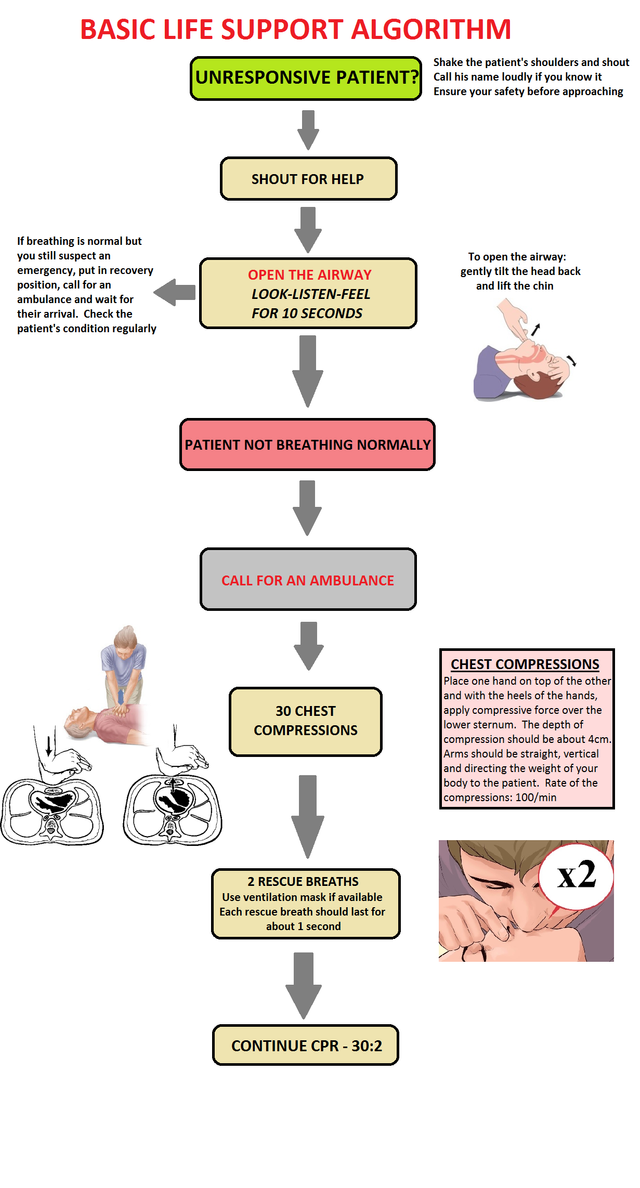
IMPORTANT THINGS TO REMEMBER
1. Put your safety first before approaching the patient
2. DO NOT tilt the head back if spinal injury is suspected eg fall from height, motor-vehicle accident
3. The LOOK-LISTEN-FEEL technique: Put your ear over the patient’s mouth while your face is directed towards his chest. LOOK for signs of breathing by observing the patient’s chest, LISTEN for his breath, FEEL his breath on your ear or FEEL his chest movement by placing your hand on it. Remember: infrequent, slow and noisy gaps of air are NOT NORMAL BREATHING.
4. Use an AED if available. Send a bystander to look for one. If alone, STAY WITH THE VICTIM and start CPR.
5. If another bystander is close to you with knowledge of CPR, you can work together. One can be responsible for the rescue breaths and the other for the compressions. You can alternate if required.
6. The point of compression should be approximately in the lower sternum (breastbone) in the middle of the chest. In men this point is easier recognised as the midpoint of a line from one nipple to the other. Press for approximately 4-5cm (1.5-2 inches). Keep your arms straight and do not bend your elbows. The chest will give some resistance but if you use your upper body's weight, it won’t be difficult to compress. Release the pressure between each compression to allow the chest to quickly recoil back. Count the compressions loudly, especially if you are working together with a second rescuer. Practice the 100/min rhythm at home. Don’t put any pressure in the upper abdomen, the bottom of the sternum or the ribs.
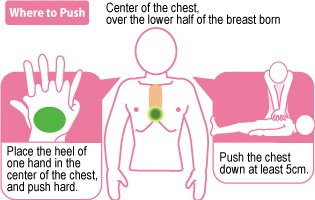
7. For a proper rescue breath, place one hand on the patient’s forehead to help tilt the head back. Use this hand to gently pinch the soft part of the nose to keep it close. Lift the chin with the other hand and use your thumb to open his mouth. Place your lips around the patient’s mouth and blow steadily for about one second. Try to observe the patient’s chest. If it rises, you are doing a great job! Use a ventilation mask if available.
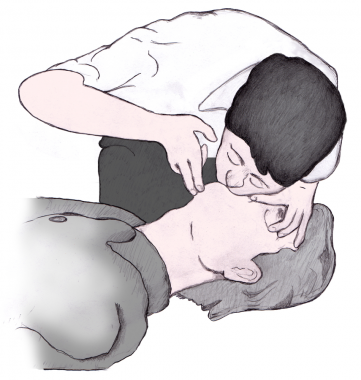
8. Remember: CIRCULATION IS THE PRIORITY. Do not stop compressions for more than 10 seconds in order to give rescue breaths.
9. Stop CRP if an Emergency Personnel arrives, if you are exhausted or if the patient recovers. If the patient starts breathing normally but is still unresponsive put him in the recovery position. Keep observing him. His health may still deteriorate and may require CPR again.
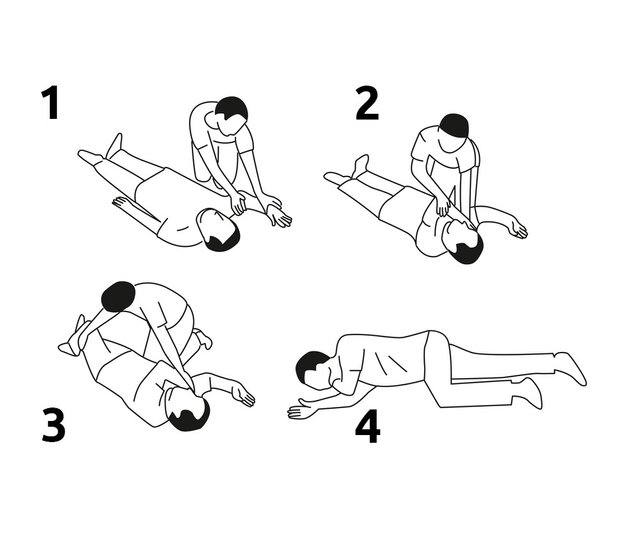
10. For the resuscitation of children you can use the Adult guidelines, even though Pediatric CPR has some variations. Doing something is better than doing nothing.
The above instructions are guidelines only and the exact circumstances of the cardiac arrest are the final determining factor about the right technique to use. The guidelines can change, so make sure you get frequent updates. I believe that basic first aid knowledge should be something that EVERYONE has. If you train yourself through a certified Basic Life Support course, one day you may save a human life, whether this life belongs to a stranger or a family member. In the same way, a person trained in CPR may be there for you and save your life if needed. This article is informative only and it is in no way a replacement for a First Aid course.
============================================================================
My other articles:
KETOGENIC DIET:
https://steemit.com/food/@nulliusinverba/my-low-carb-ketogenic-dinner-how-i-eat-fat-to-lose-weight
MY ARTICLE ON EVOLUTION:
https://steemit.com/science/@nulliusinverba/the-proof-of-evolution-in-our-bodies